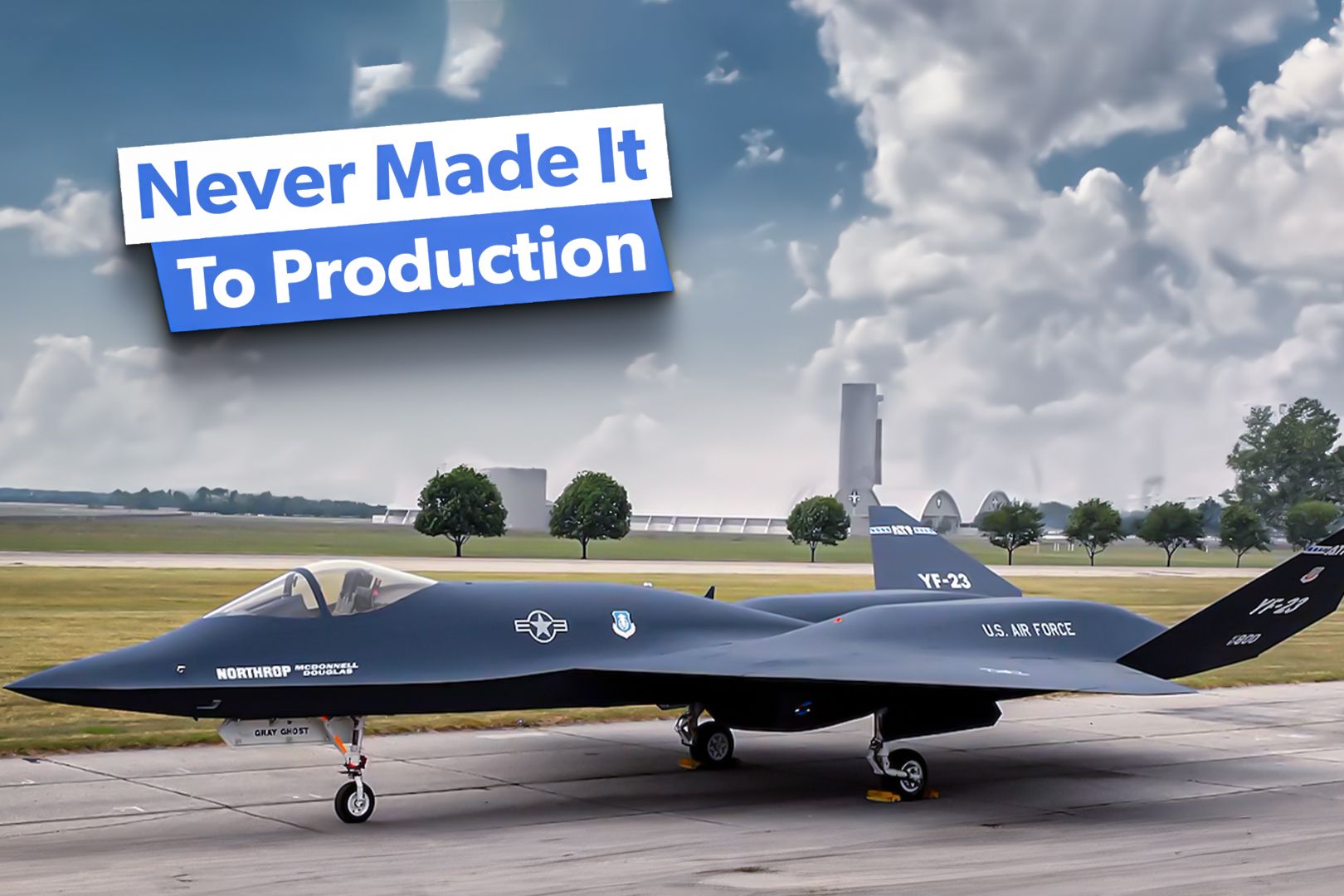Summary XFV-12 aimed to combine F-4 speed and VTOL capabilities, envisioned for Sea Control Ship use Goblin XF-85 sought to protect B-36s but had hazardous tests, like earlier Navy's F9Cs from airships F-20 Tigershark, cheaper F-16 alternative, improved F-5E but canceled after low interest post completing 3 prototypes The US Air Force and Navy have developed scores of experimental fighter jets that never went into production. Sometimes, the aircraft were just intended as a proof of concept . Other times, they lost to a competitor's design.
Still, other times, requirements had changed by the time they were developed (as in the famous case of the North American XB-70 supersonic bomber ). Here are five US fighter jets that flew but never entered serial production. 1 YF-23 Black Widow II Two YF-23 prototypes were built for the Advanced Tactical Fighter program Number built: 2 prototypes First flew: 1990 Primary contractor: Northrop The YF-23 Black Window was Northrop's answer to the US Air Force's requirement for an Advanced Tactical Fighter.

However, the Lockheed YF-22 won the competition and went on to become the F-22 Raptor. The YF-23 was considered stealthier and faster than its YF-22 rival, but it was less agile. Two YF-23 prototypes were built, and one is on display at the National Museum of the United States Air Force .
The Advanced Tactical Fighter was intended to replace the F-15 Eagle air superiority fighter. But as history would have it, the Cold War would end, and the F-22's high cost saw it canceled early after only 187 production models were built. This forced the Air Force to rely on the F-15 (with F-15EX Strike Eagle IIs in production today).
The jet competed against what is now known as the F-22 Raptor 2 X-32 Two X-32s were built for the Joint Strike Fighter program Number built: 2 First flew: 2000 Primary contractor: Boeing The X-32 is remembered for its unconventional (if not ugly) looks and was the Boeing bid to build the Joint Strike Fighter. However, it lost to Lockheed Martin's X-35 demonstrator, which became the F-35 Lightning II fifth-generation fighter jet. According to the National Interest , " Boeing emphasized simplicity in its design, focusing on stealth and speed with a single-engine cycle and delta wing shape.
However, the X-32's Short Takeoff and Vertical Landing (STOVL) system proved less efficient than Lockheed's lift-fan design. " However, Lockheed's X-35 proved better in stealth and supersonic flight. Now, the F-35 Lightning II is the world's most common fighter jet and the only fifth-generation fighter in service in export markets.
The failed X-32 is parked next to the YF-23 in the National Museum today. The fighter jet demonstrator has been given a new lease of life. 3 XF-85 Goblin Two XF-85s were built as parasitic aircraft for the Convair B-36 Number built: 2 First flew: 1948 Primary Contractor: McDonnell Aircraft The XF-85 Goblin was a bizarre parasitic aircraft built during WWII by McDonnell Aircraft.
It was designed to be deployed from the bomb bay of the large Convair B-36. The Goblin was intended to protect B-36 bombers from hostile interceptor aircraft far beyond the range of conventional escort fighters. Once the enemy interceptors had disappeared, the Goblin could reattach to the B-36 and return to the bomb bay.
Tests for the Goblin began in 1948 on B-29s. While the idea worked, it was difficult and hazardous, with half of the Globins making emergency ground landings. Strangely enough, the XF-85 was not a novel concept.
The US Navy once operated Curtiss F9C Sparrowhawk parasitic biplanes from its two Akron-class airships (meaning the Navy once had aircraft carrier airships). The USS Akron and Macon were two massive aircraft carrying airships built for the US Navy and helped define an era. 4 F-20 Tigershark Three F-20s were built as a cheaper option to the F-16 Number built: 3 First flew: 1982 Primary contractor: Northrop The Northrop F-20 Tigershark was a light fighter intended to be a cheaper alternative to the F-16 Fighting Falcon.
It was an evolution of the more successful earlier Northrop F-5E Tiger II and boasted greatly improved overall performance, a powerful radar, and a new engine. It was much faster than the F-5E and could carry most US-produced weapons. However, the project was canceled after low interest and the completion of three prototypes (a fourth prototype was partially built).
Another canceled F-16 competitor of the era was the Israeli IAI Lavi (which remains both a source of national pride and national sadness in Israel today). In the 1970s, after France imposed an arms embargo, the Israelis built two types of fighter jets based on the French Rafale V. 5 XFV-12 One XF-12 prototype was built to be a F-4-like carrier adaption Number built: 1 First flew: 1978 Primary contractor: Rockwell International The F-4 Phantom II was one of the most successful fighter jets of its era (and remains in service in two air forces worldwide today).
The XFV-12 was an attempt by the Navy to combine the F-4's speed (over Mach 2) and ability to carry AIM-7 Sparrows with a VTOL capability. The Navy hoped to operate the XFV-12 off a small aircraft carrier type being considered at the time called the Sea Control Ship (a sort of escort carrier to support convoys). Neither the ships nor the XFV-12 were ever built.
While the XFV-12 appeared superior to the Hawker Siddeley Harrier on paper, it underperformed during trials. The versatile multi-role fighter aircraft is being phased out but will be around until 2030..



















